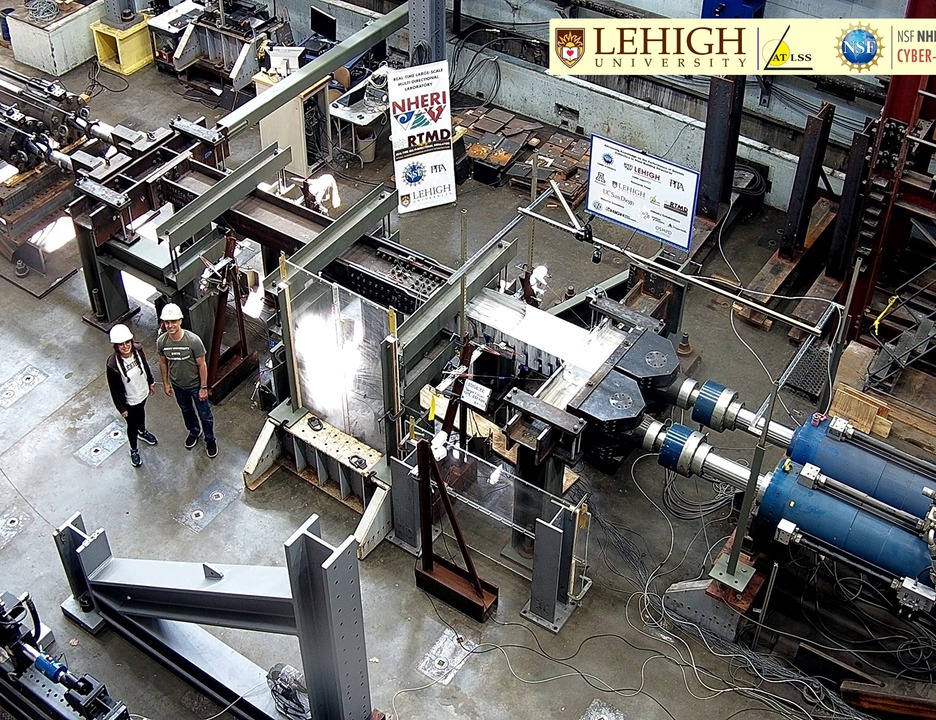Earthquakes and tall buildings mix about as well as running and scissors.
Engineers are working on ways to make the combination less destructive. But before they can develop viable, cost-effective methods to reduce the effects of earthquakes on tall buildings, they have to understand the methods currently used to design them and the effect on the building’s performance.
Earthquakes cause vibrations in the earth as two masses of the earth’s crust move against each other, leading to a sudden fault rupture. This rupture releases energy in the form of seismic waves. These waves are what we experience as an earthquake. As these waves interact with the built environment, their energy leads to imposing accelerations onto buildings and other infrastructure that can cause damage and disruptions.
In a building, these earthquake-induced accelerations act on the mass that is present throughout the structure. A majority of the mass is the self-weight of the floors. The accelerations acting on the floor mass generate large lateral forces that must be transferred to the lateral force-resisting system, such as walls or steel frames, in order to transfer the earthquake-induced forces down to the foundation. In floors, the force transfer is assisted by structural elements that are added to the floors, called collectors. These special elements, either through reinforcement in concrete floor slabs or collector beams placed beneath the floor, transfer the earthquake forces to the lateral force-resisting system.
Collectors serve an important role in earthquake mitigation, but there is surprisingly little research on these structural elements, even among civil engineers. One researcher who has identified this gap in research and is concerned with studying collectors is Robert B. Fleischman, Professor of Civil Engineering and Engineering Mechanics at the University of Arizona. He used Lehigh University’s Natural Hazards Engineering Research Infrastructure (NHERI) Experimental Facility to conduct research supported by his National Science Foundation (NSF) award, titled “Advancing Knowledge on the Performance of Seismic Collectors in Steel Building Structures.” Additional support provided to the Lehigh team included the Pennsylvania Infrastructure Technology Alliance (PITA).
The study was a collaboration between researchers at the University of Arizona, Lehigh University, and the University of California at San Diego. In addition to Fleishman, collaborating researchers from the University of Arizona included PhD student Sudan Pandey. Collaborating researchers from Lehigh included Richard Sause, James Ricles, Thomas Marullo, and Alia Amer, and current PhD student Jessica Duncan. Collaborators from the University of California at San Diego included Chia-Ming Uang and PhD student Dongzhi Guan. Industry partners included the American Institute of Steel Construction, Walter P. Moore and Associates, Inc., Degenkolb Engineers, California Office of Statewide Health Planning and Development, California Field Ironworkers Administrative Trust, Herrick Corporation, High Steel Structures LLC, and Sippel Steel Fabricators.
Fleishman’s research, both the experimental data he collects at Lehigh’s NHERI facility, and the analysis he performs, will contribute to the revision of building codes that will increase the safety of buildings. These safety improvements will apply to newly constructed buildings and can enable older, vulnerable buildings, especially critical ones such as hospitals, to be retrofitted according to building codes to make them safer and more resilient to earthquakes.
Fleischman has been collecting data on building-earthquake interactions using NHERI resources at the University of California San Diego (UCSD) and Lehigh University.
At Lehigh University, Fleischman conducted large-scale testing of the connector elements, using a methodology that involves quasi-static loading (slowly applying load in small increments). The research team braced a collector against the NHERI Lehigh strong floor in a large-scale, 50-foot-long test setup, with a pair of loading actuators supplying as much as 1 million pounds of collector axial force, and a pair of reaction actuators to simulate the rotation of a column at the collector connection, similar to inter-story drift.
Fleischman describes the goal of the project: “The project is focused on advancing knowledge on a failure-critical yet poorly understood component of a building's seismic force resisting system, the seismic collector, with a focus on steel building structures with composite floors. To achieve this goal, the project is relying on the unparalleled capabilities of the NHERI Lehigh (and NHERI UCSD) Experimental Facilities. The project outcomes will relate to new design recommendations for these elements, both for new construction and evaluation of existing structures, and the potential viability of innovative concepts.”
Lehigh’s NHERI RTMD Experimental Facility Operations Manager Joseph Saunders says, “The NHERI Lehigh Facility is uniquely positioned to assist researchers with advanced multi-mode large-scale testing to help them solve complex problems and provide answers for practicing engineers. The University of Arizona team, led by Dr. Fleischman, have been our long-time collaborators, having worked with the NHERI Lehigh facility on multiple projects over the last 15 years. The team’s recent collector testing in the NHERI Lehigh facility exemplifies their commitment to understanding engineering problems that practitioners are concerned with.”
Data collected and developed under this project will be available via publications and hosted on the NHERI DesignSafe platform for future researchers to use.
Operations and maintenance of the NHERI Lehigh EF are supported by the National Science Foundation (NSF). The facility is led by James M. Ricles, Claudia Reis, Richard Sause, and Joe Saunders, with an exceptional staff that includes Liang Cao, Thomas Marullo, and Darrick Fritchman.

